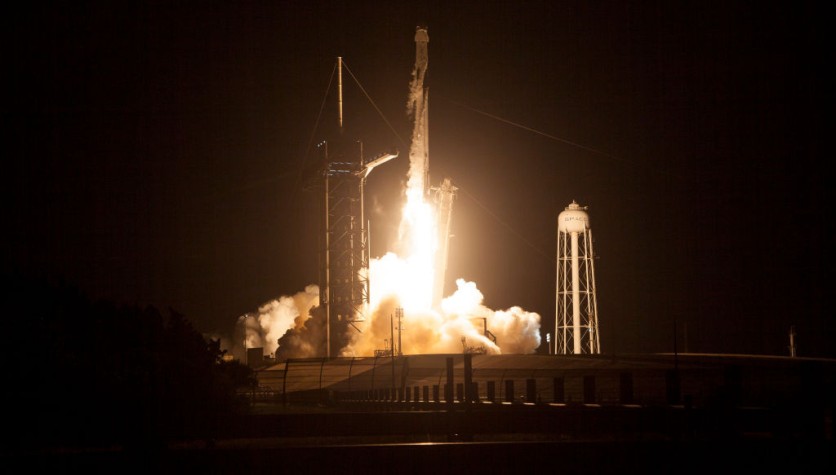
Virgin Orbit announced on June 8 that its upcoming orbital mission called Tubular Bells, Part One after the first album recorded by Virgin Records, is set to launch in the last week of June.
Virgin Orbit stated that its rocket, LauncherOne, has already been shipped to the Space Port located in California and are currently being prepared for its mission.
Virgin Orbit Scheduled Mission
Virgin Orbit's launch system uses a technique called air launch, in which a rocket is launched from under the wing of a 747-400 jet aircraft, called Cosmic Girl, rather than from a traditional launch pad on the ground to Tech Crunch.
In addition to improving the rocket's payload capacity, the technique allows LauncherOne to fly on short notice and from a wide variety of locations to access any orbit.
Also Read : Virgin Orbit Launch: Test Flight Terminated Shortly After Cosmic Girl Released the Rocket
Last week, Virgin Orbit conducted a successful cryoload test, where LauncherOne was filled with liquid oxygen propellant and fully pressurized to flight-like levels, according to Fox.
During the test, the company stated that they were able to achieve all of their planned objectives, including 100% LOX and fuel fill and nominal pressurization of all high-pressure gas systems with no tank leakage.
Virgin Orbit will now push through with a rehearsal to run through all combined launch operations until takeoff. The company added that they will be in the clear to push forward and commit to launching if all looks good.
The satellites from the U.S Department of Defense's Space Test Program, the Royal Netherlands Air Force, and the SatRevolution will all be attached to LauncherOne and will be then released on the orbit.
The Department of Defense is launching three cube satellites as part of the Rapid Agile Launch RALI Initiative program.
SatRevolution is launching two optical satellites named STORK-4 and STORK-5. This is a part of the mission's 14-satellite STORK constellation.
The Royal Netherlands Air Force is launching the first military cube satellite in the Netherlands, known as BRIK II, which was built and integrated by Innovative Solutions in Space, with contributions from the Delft University of Technology, University of Oslo, and Royal Netherlands Aerospace Centre.
Virgin Orbit stated that they will be sending their integrated payload stack up to Mojave to soon join the rest of the system.
The mission this month comes after LauncOne's successful launch in January. Comic Girl was sent to a launch site located over the Pacific Ocean during the demonstration.
LauncherOne was then released from the aircraft. A two-stage rocket ignited and blasted the LauchnerOne into the Earth's orbit. By the end of the flight, LauncherOne released 10 satellites that NASA's Launch Services Program selected. It was a part of NASA's CubeSat Launch Initiative CSLI.
Almost all of the satellites were designed, built, and tested by universities across the United States, including Brigham Young University, the University of Michigan, and Louisiana at Lafayette.
According to Virgin Orbit, the flight marked the first time an orbital class, the liquid-fueled rocket successfully reached space.
NASA's Partnership with Virgin Orbit
In 2020, NASA-sponsored CubeSats flew on the agency's next Educational Launch of Nanosatellites or ELaNA mission, marking it as the first payload that was carried by Virgin Orbit's LauncherOne rocket, according to NASA.
With the small satellites safely secured inside the payload fairing, and the fairing mated to the rocket, Virgin Orbit launched ELaNa on December 2020, and the flight took place in Space Port in California.
Related Article: Virgin Galactic Announces Another Human-Tended Research Aboard its Spacecraft VSS Unity
This article is owned by Tech Times
Written by Sophie Webster
ⓒ 2025 TECHTIMES.com All rights reserved. Do not reproduce without permission.




